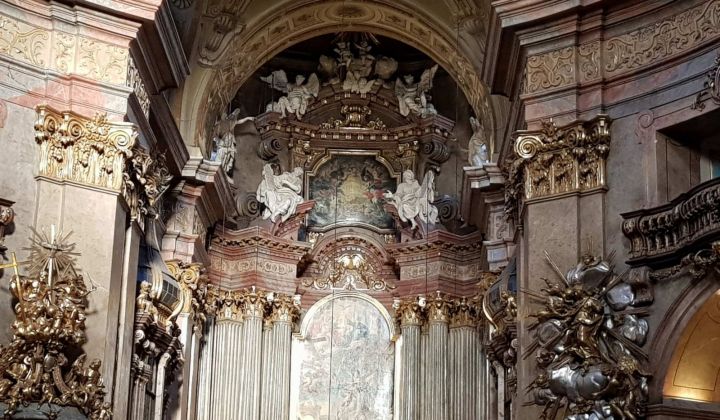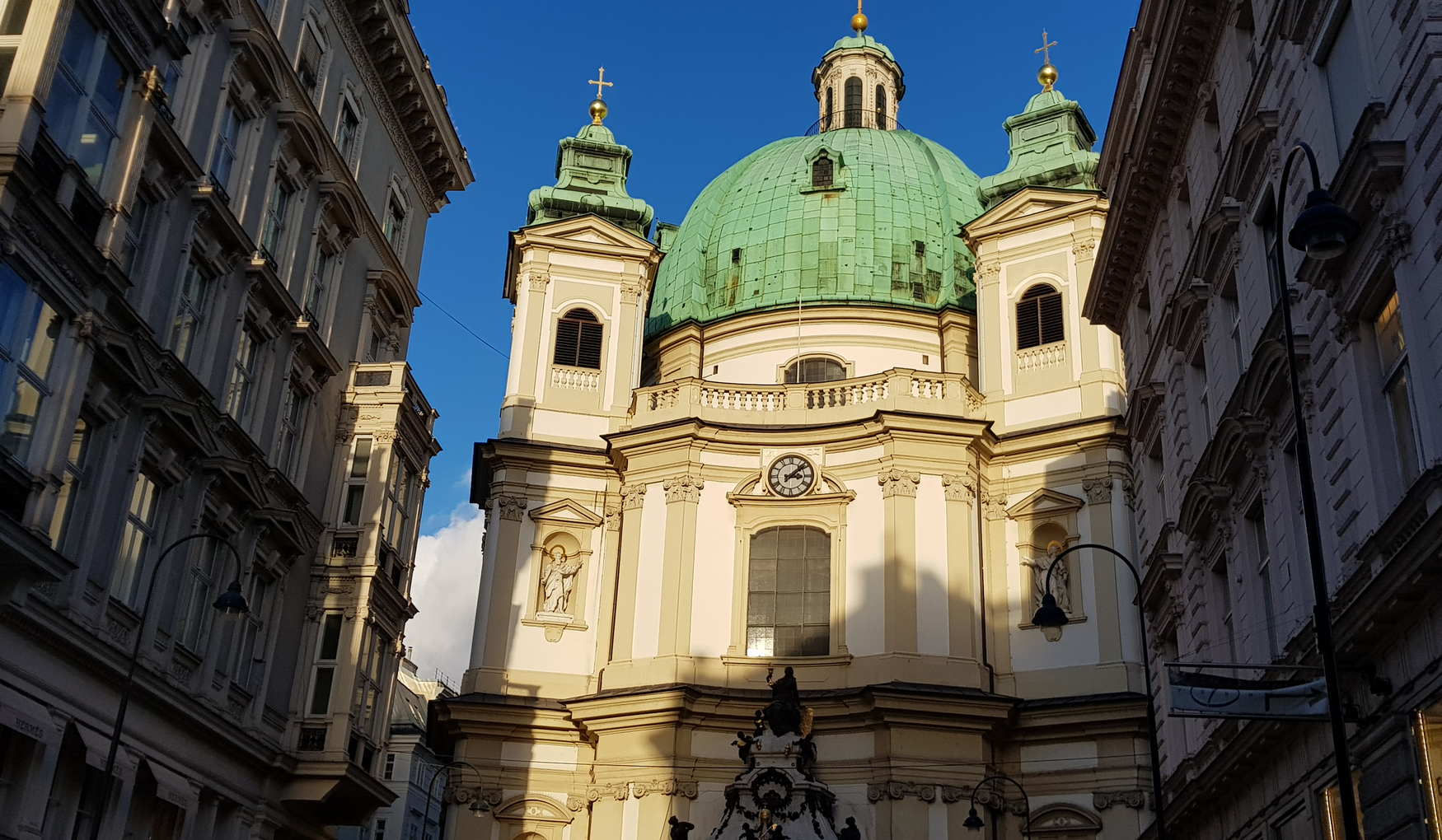After wandering through the crowds of tourists in the many cafes and shops, it's time to take a closer look at the city's architecture. And it impresses and catches the eye at every turn. Just off Vienna's famous Graben is St Peter's Church. This church is interesting because it is one of the oldest churches in Vienna and also one of the most beautiful baroque churches.
The Peterskirche (as it is called), which faces the main street, has such a beautiful interior thanks to the restoration work it has undergone.
It's also home to eight altars, the beautiful Putti angels (Italian for 'babies') and many stunning paintings and sculptures. If you want to introduce your child to Christian churches, this is a great option.
The history of the church
The site of today's St Peter's in Vienna was the first Christian church in the then Roman Empire, built in the fourth century.
It was later replaced by a Romanesque church which burned down in one of the great fires of Vienna. It was only in the 18th century, in 1733 to be precise, that the church was built that we can still visit today.
Imagine that for over 1600 years services have been held here every day, as the church is still in use. From the outside it resembles St Peter's in Rome, but it is much more cramped due to the lack of space.
However, this does not detract from the richness of the interior. Despite the simplicity of the exterior, the interior of the church is truly magnificent. As it is dedicated to the Holy Trinity, you will see many images and symbols of the most important sacrament of the Christian faith.
Interiors
Every element and decoration in St Peter's shows the painstaking work of the people who worked on the interior.
The high vaults, the painted ceiling of the oval dome, the cute angels called putti, the abundance of gilded elements and patterns create an impression of scale. Children love to look at these angels — the chubby little ones with cute facial features leave them fascinated.

It's only natural that putti means 'children' in Italian. These figures were favoured by architects because they could easily fill the empty space of the vaults and looked beautiful.
In ancient times their image was associated with that of good spirits. Their images are a cross between ancient cupids and Christian angels.
As mentioned above, there are 8 altars in St Peter's. In the main altar you'll see an interesting painting of the healing of the lame martyr by St Peter.
The fresco on the dome is the work of J. M. Rothmayr and the pulpit is the work of Steinl. In addition to the Holy Trinity, the church also worships the Virgin Mary, whose images can be found on the high altar, the side altars and the dome fresco.
Interesting are the sculptures of the saints, which, thanks to the paintings on the walls, become subjects in themselves. The church contains the original relics of two martyrs, brought from the Christian catacombs of Rome by Cardinal Colonitius in 1733. In Vienna, they were dressed in period costume and placed in glass reliquaries under the altars of the church.
If you're lucky, you'll be able to listen to organ music and photograph the majestic instrument. Filming is free in the grounds, although some are interrupted by church services. Regular services are held in the church.
As you look around the interior of the church, try to look up more often - under the vaults you will see windows with fancy covers, figures of preachers and four Latin Fathers of the Church on the ceiling arch by J.G. Schmidt, the imperial coat of arms with the motto of Leopold I above the triumphal arch, and above the entrance in the choir is an organ. It is one of the most famous in Austria.
Many guides advise you to walk around the church after your visit. This will allow you to appreciate the dynamic line of the building, to see the monument to the founder of the church, Charlemagne (there is a version that it was he who built the first building in 792, but it was later burnt down).
There is also a semicircular projection with two sculptures by Matelli, a façade decorated with figures by Altomonte and an inscription recalling the emperor's vow during the plague.
A visit to St Peter's in Vienna allows you to escape the hustle and bustle of the city for a few minutes, to enjoy the interior, admire the exquisite works of art and, if you're lucky, listen to the organ (free half-hour organ recitals are held every day at 3pm).











